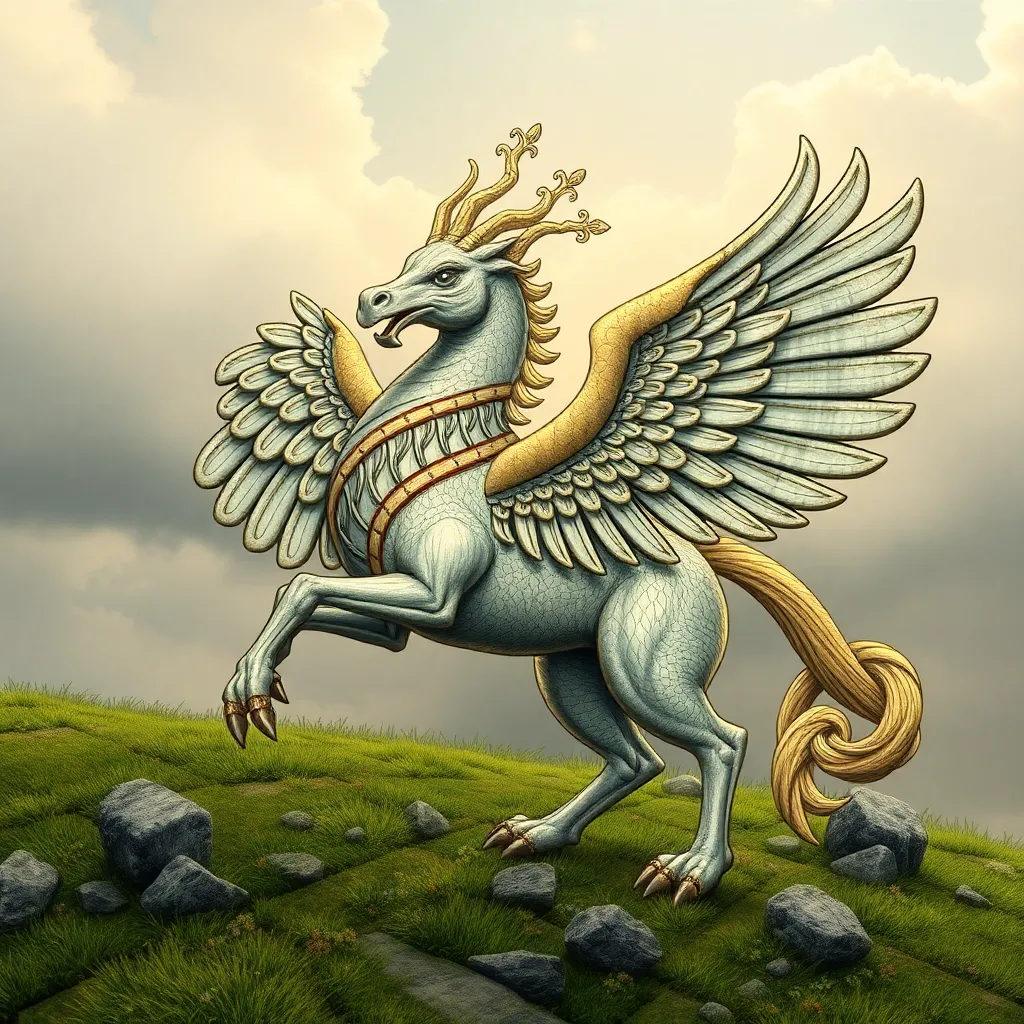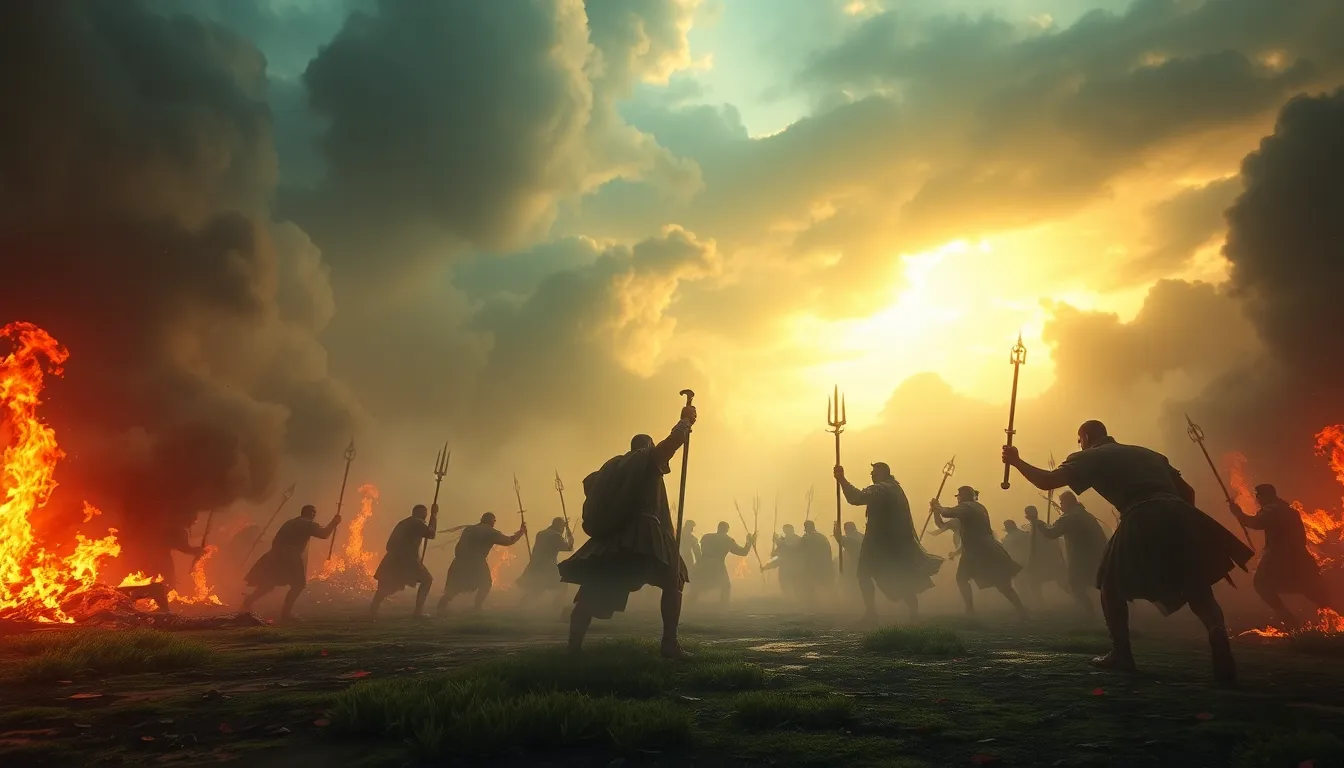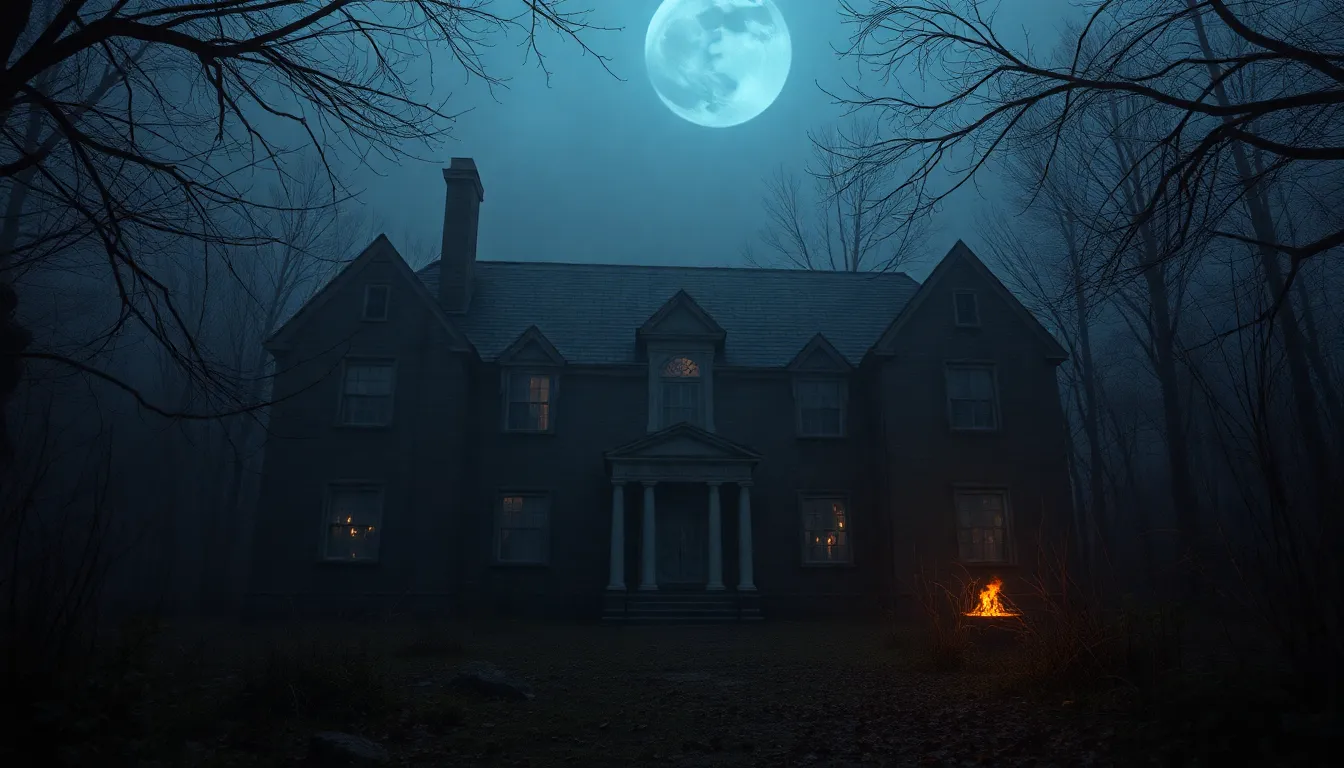The Hippogriff in Celtic Art: A Visual Representation of Mythological Power
I. Introduction
The Hippogriff, a fantastical creature born of the imaginative realms of mythology, captures the essence of both strength and grace. This hybrid being, traditionally depicted with the body of a horse and the wings and head of an eagle, symbolizes the remarkable intersections of different realms within mythological narratives. In Celtic art, the Hippogriff stands out as a prominent figure, illustrating the rich tapestry of mythological creatures that populate this artistic tradition.
Celtic art is renowned for its intricate designs and deep symbolism, often reflecting the beliefs and values of the cultures from which it emerged. The depiction of mythological creatures, such as the Hippogriff, plays a crucial role in conveying these cultural narratives. This article aims to explore the significance of the Hippogriff in Celtic art, examining its origins, artistic representations, and the symbolism it embodies.
II. Origins of the Hippogriff in Mythology
The Hippogriff’s origins can be traced back to classical literature, with its first significant mention appearing in Ludovico Ariosto’s epic poem “Orlando Furioso” in the early 16th century. This work introduced the creature as a symbol of extraordinary power and the noble pursuit of adventure. The fusion of the horse and eagle serves not only as a visual marvel but also as a representation of the harmony between two different realms—earth and sky.
Throughout history, the Hippogriff has been associated with various themes and motifs, embodying qualities such as courage, nobility, and mystical prowess. In medieval literature, the creature often appears as a steed for heroes, emphasizing its status as a creature of great significance.
III. The Significance of Celtic Art
Celtic art is characterized by its distinctive style, which includes intricate knotwork, spirals, and interlacing patterns. These designs often carry deep symbolic meanings, reflecting the spiritual and cultural values of the Celtic people. In this artistic tradition, the representation of mythological creatures plays a vital role in storytelling and cultural expression.
Symbolism in Celtic art is essential, as it conveys complex ideas and beliefs through visual representation. Mythological creatures, including the Hippogriff, often symbolize various attributes such as:
- Strength and power
- Wisdom and knowledge
- Connection to the divine
This symbolic richness allows viewers to grasp the deeper meanings embedded in the artwork, linking them to the cultural heritage of the Celts.
IV. The Hippogriff’s Artistic Depictions in Celtic Art
The artistic depictions of the Hippogriff in Celtic art showcase a blend of imagination and skilled craftsmanship. Visual characteristics typically include:
- A powerful horse’s body, often depicted in dynamic poses
- Majestic wings that convey movement and grace
- Intricate detailing that emphasizes the creature’s mythical nature
Notable examples of Hippogriff depictions can be found in various artifacts, including illuminated manuscripts, stone carvings, and metalwork. For instance, the Book of Kells, a masterpiece of Insular art, features numerous mythological creatures that echo the aesthetic qualities associated with the Hippogriff.
Artistic techniques employed in these depictions often include:
- Use of vibrant colors to enhance visual appeal
- Layering of patterns to create a sense of depth
- Symbolic representation through embellishments and motifs
V. The Symbolism of the Hippogriff in Celtic Culture
Within the context of Celtic culture, the Hippogriff holds significant symbolic value. It represents power and nobility, often associated with heroic figures and the noble quest for knowledge and adventure. The creature embodies the duality of existence—bridging the terrestrial and the celestial, the known and the unknown.
The connection between the Hippogriff and Celtic folklore is profound, as it reflects broader themes of transformation and the interplay between different realms. In various stories and legends, the Hippogriff serves as a guide or protector, symbolizing the balance between chaos and order.
Moreover, the Hippogriff can be interpreted as a metaphor for duality and balance, representing the harmony between contrasting elements such as:
- Strength and gentleness
- Earthly existence and spiritual transcendence
- Chaos and order
VI. Comparative Analysis: The Hippogriff vs. Other Mythological Creatures
When comparing the Hippogriff to other mythological creatures, particularly those in Celtic mythology, several similarities and differences emerge. For instance, like dragons and griffins, the Hippogriff represents a fusion of different animal forms, emphasizing the theme of hybridization in mythology.
However, distinctions also exist:
- Dragons are often associated with wisdom and power, while the Hippogriff emphasizes nobility and grace.
- Griffins, typically depicted with the body of a lion and the head of an eagle, share some visual similarities but differ in their symbolic meanings.
The Hippogriff’s unique place in the mythological hierarchy highlights its role as a creature of adventure and exploration, making it an enduring symbol in both Celtic art and literature.
VII. Modern Interpretations and Influence
In contemporary art and literature, the Hippogriff continues to inspire creators, reflecting a resurgence of interest in Celtic mythology. Modern interpretations often reimagine the creature in various forms, from illustrations in children’s books to adaptations in fantasy films.
Artists today draw inspiration from ancient depictions, incorporating elements of Celtic art into their works. This blend of old and new helps keep the mythological narrative alive, allowing new generations to engage with these timeless stories.
VIII. Conclusion
The Hippogriff’s significance in Celtic art is profound, serving as a visual representation of mythological power and cultural identity. Through its artistic depictions, the creature embodies themes of strength, nobility, and the intricate balance of duality, reflecting the rich tapestry of Celtic mythology.
As we explore the enduring legacy of mythological representations, it becomes clear that the intersection of art, culture, and mythology continues to inspire and resonate with people across generations. The Hippogriff, as a symbol of these connections, remains a powerful reminder of the creativity and depth of human imagination.



